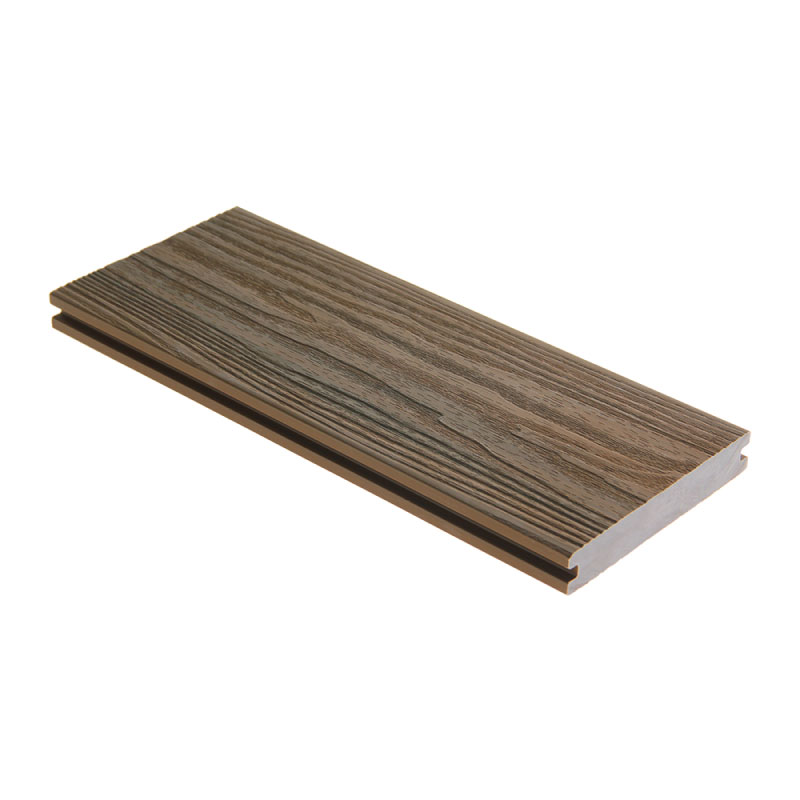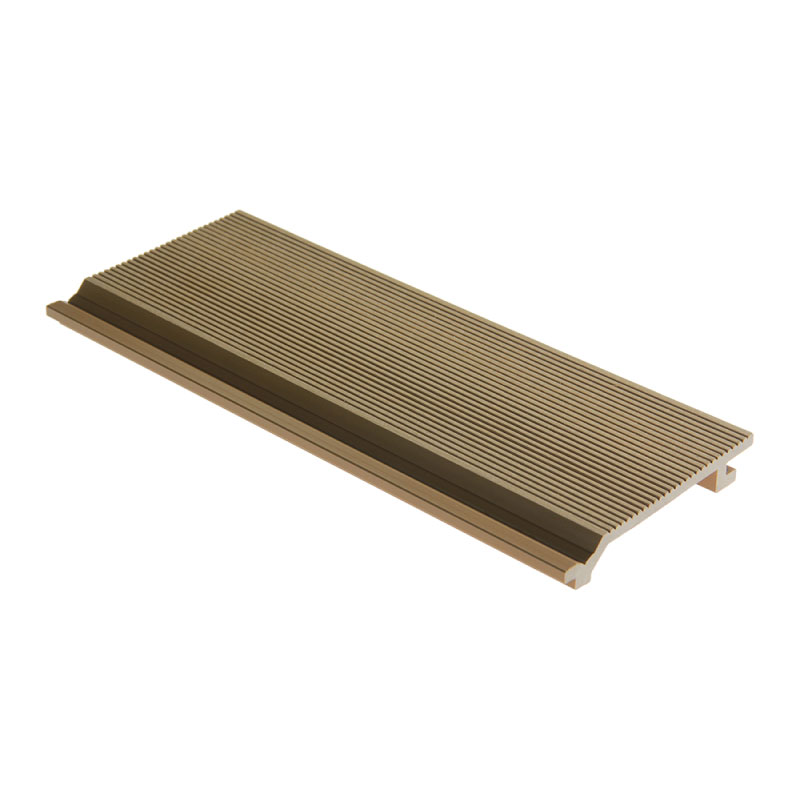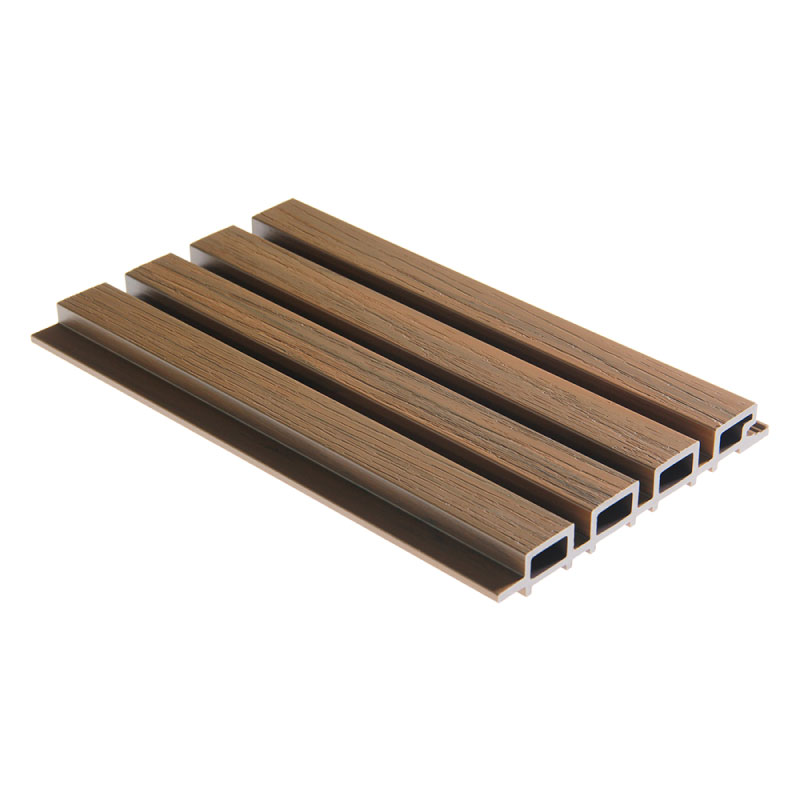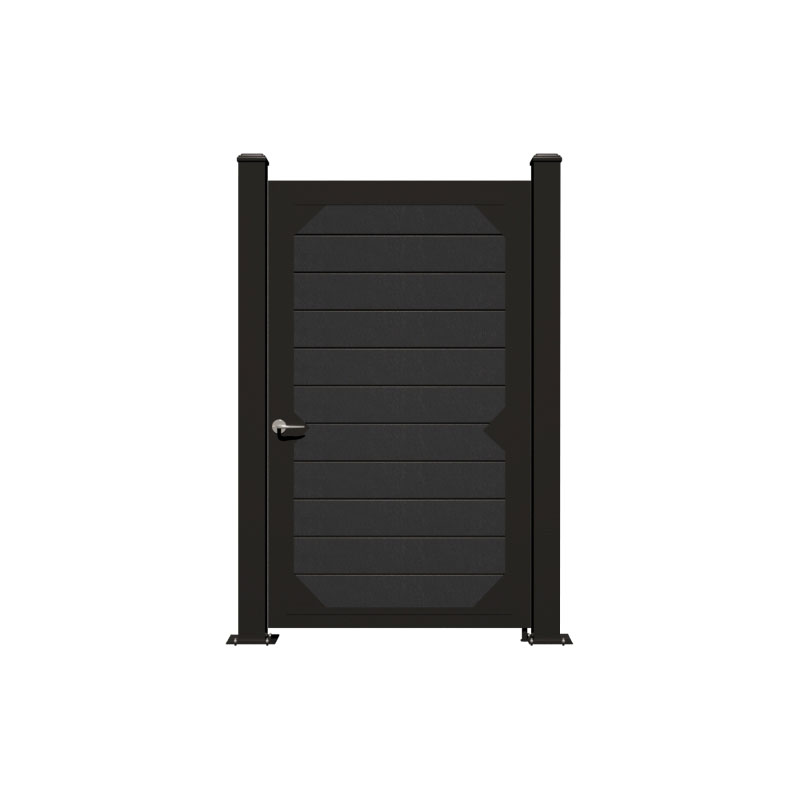An outdoor deck is a wonderful place to experience outdoor life. But to ensure that you have a wonderful outdoor living space, you need to clean and even maintain it regularly. In order to get a clean and beautiful outdoor deck, it needs to be cleaned at least twice a year. If your outdoor deck is built from pressure-treated wood, then you will also need to do regular repairs, painting, sealing, etc.
But even if you do a good job of regularly maintaining and servicing your wood deck. It will still bend, rot, or grow insects. Plus, paint and stain don’t last forever, and wood decks will fade over the years. The good news is that you can repair and repaint your outdoor deck. The job is less expensive than replacing a deck and does not require any special skills.
How much does it cost to restore a deck?
The condition and size of the damage to the deck will affect the cost of repairing it. Also, the price of the repair is related to the materials used for the deck. Pressure-treated wood decking, cedar decking, and composite decking all have different repair costs.
Once the damaged part is repaired, then it is possible that the entire deck will need to be refinished. If you want to do your own DIY repairs, you may need to rent a pressure washer and purchase chemical strippers, sandpaper, and cleaning oil. You will need to pay for these products and materials at a cost of roughly $0.50 to $0.65 per square foot. If you don’t want to do the repairs yourself, then you may need to hire a professional to completely restore your outdoor deck. The cost of the repair then depends on the person you hire.
It is worth noting that most composite decking is strong and durable and will last for years without fading, cracking, or rotting. Therefore, if your outdoor deck is installed with composite decking material. Then, you only need to clean them once in a while without much work to +keep them beautiful.
How to restore a wooden deck
Wood decking requires a lot of maintenance work. If these maintenance jobs are not done properly, then it may fade, mold, and even rot. Therefore, when you want to restore a weathered wood deck, first check for rot or mold and then replace the badly damaged boards. Scraping and sanding are the traditional methods of removing paint, but of course, you can also use chemical strippers. After you clean and rinse the deck, you can paint or stain it again.
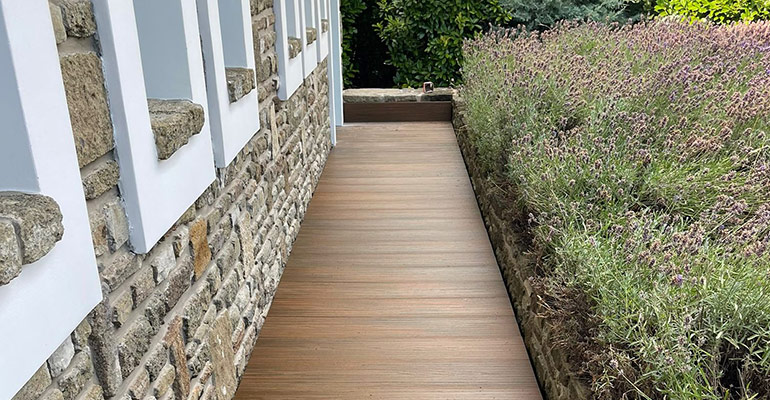
Step 1: Remove debris and furniture from the deck
Take everything off the deck and clean it, including chairs, planters, carpets, grills, etc. Then you can give your deck a thorough inspection. Pay particular attention to areas where dirt has built up, and poke the wood with a screwdriver to see if it’s damp or rotten. Anywhere tools tend to sink in will show rot. If the wood is near the ground, it will be more likely to rot. Look at the part of the house where the deck meets the house. If there is a lot of rot in any part of the deck structure, get it repaired before continuing with the inspection.
Step 2: Repair the damaged deck
Replace any broken or bent boards. Also, look for dry rot as well. This is because there is a fungus that eats away at the cellulose, which is what makes the wood hard. Before you replace rotted or broken boards, take pictures of the entire deck and close-ups of the boards and send them to your deck supplier. They will be able to tell which wood was used on the deck so that the new boards provided are all made of the same material. If most of the deck boards are broken, you may want to replace them all with composite decking. It doesn’t require as much maintenance as wood and it won’t rot.
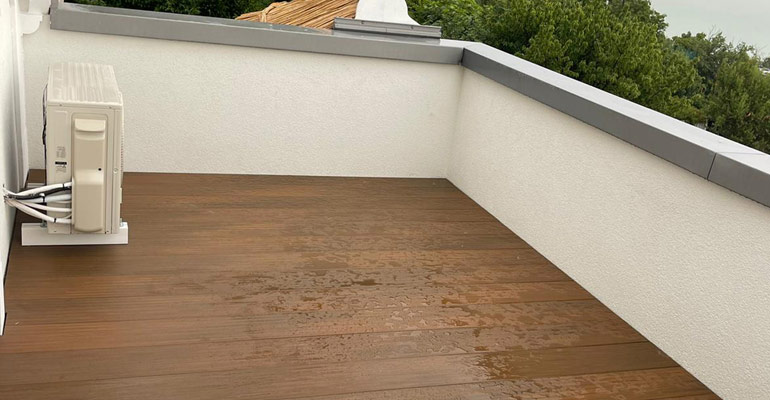
Step 3: Remove any pre-existing paint or stains
To make sure the newly painted surface stays put on your deck, scrape and sand off the old paint or stain until the bare deck surface is exposed. Before you sand or scrape the wood, make sure to push the ends of any nails or screws below the surface. Any screws or nails that are starting to rust should be replaced.
If you don’t want to get too tired, try to use a pull-type rather than a push-type tool. Remember to wear knee pads to protect your knees. Avoid scraping with fast-moving power tools or rough sandpaper. They can leave marks that are difficult to hide. High-pressure cleaners are good for removing stubborn stains but can damage the deck surface if used improperly.
Step 4: Use a deck cleaner
Deck cleaner is sometimes referred to as “cleaner-whitener”. It is a chemical that can be used on the deck alone or mixed with water and then used on the deck. It is important to note that you should do what the manufacturer tells you to do. Most of the time, you spray the cleaner on the deck and then scrub the wood with a hard plastic brush to remove dirt and grease. Some cleaners have bleach, which also removes the dirt left behind by chemical degreasers. Wash the deck with water, then let it dry.

Step 5: Paint or seal the deck
Before you stain or paint the deck, cover the house with tape and plastic sheeting. Start at one corner and move around the deck in the same manner as the boards. Although a sprayer or roller can be used to apply paint quickly, it is better to use a brush to apply it to the wood. Work in an area of no more than 50 square feet and try to apply the paint as evenly as possible. As you work, use a brush to clean up drips and small spills.
How to bring composite decking back to life
Early composite decking was more difficult to clean and care for than today’s capped composite decking. But with the advancement of science and technology, composite decking can save you a lot of work.
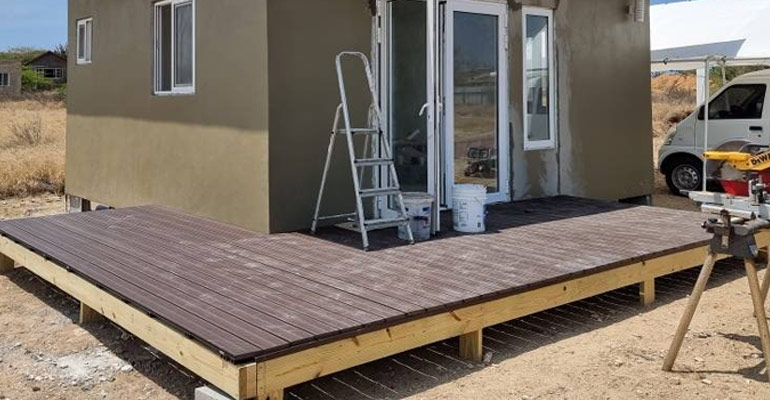
How to clean composite decking
Capped composite decking is surrounded by a protective polymer layer that shields them from the elements. It protects them from harsh elements while making them easy to clean with mild soap and a soft bristle brush. Moss and bacteria are also easy to remove. If you use a pressure washer to clean it, use a fan nozzle, and do not set it higher than 3,100 psi. Use a deck polish to remove typical stains such as those left by rotting leaves and other things. Be sure to follow the manufacturer’s instructions. Hard water spots can also be removed with white vinegar.
Replacing Worn Composite Decking Boards
Composite decking boards do not break as wood does. However, if it has deep scratches, scuffs, or stains, you may have to replace it. Please don’t worry, replacing composite decking is very easy. Even if you have never done this kind of work before, you can follow the instructions given by the composite decking manufacturer to replace your deck.


